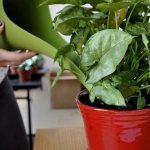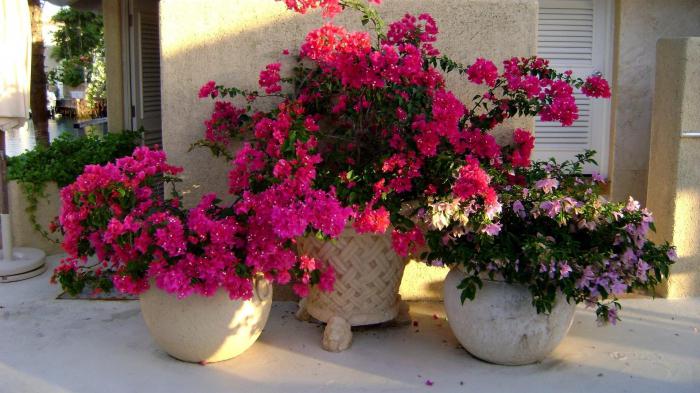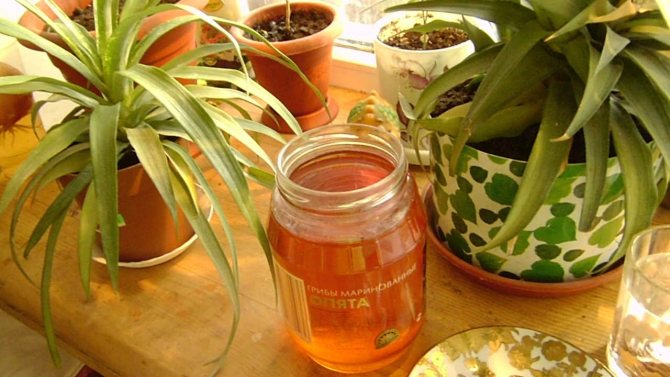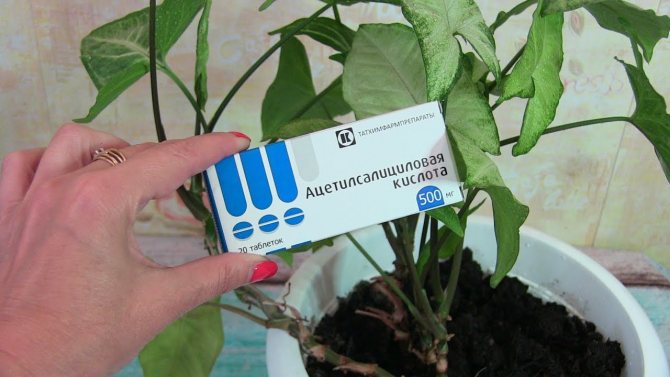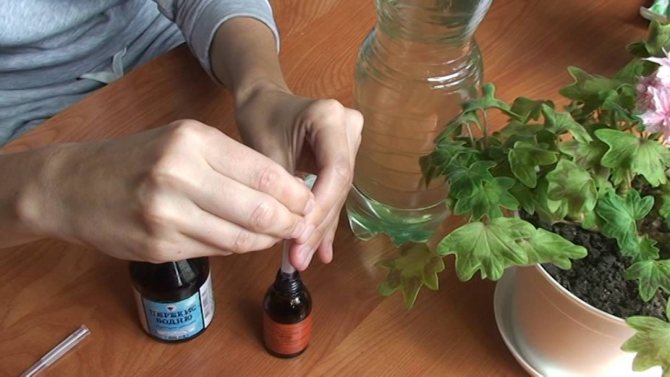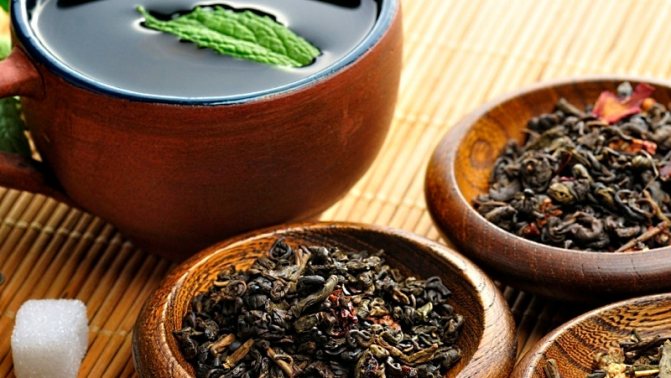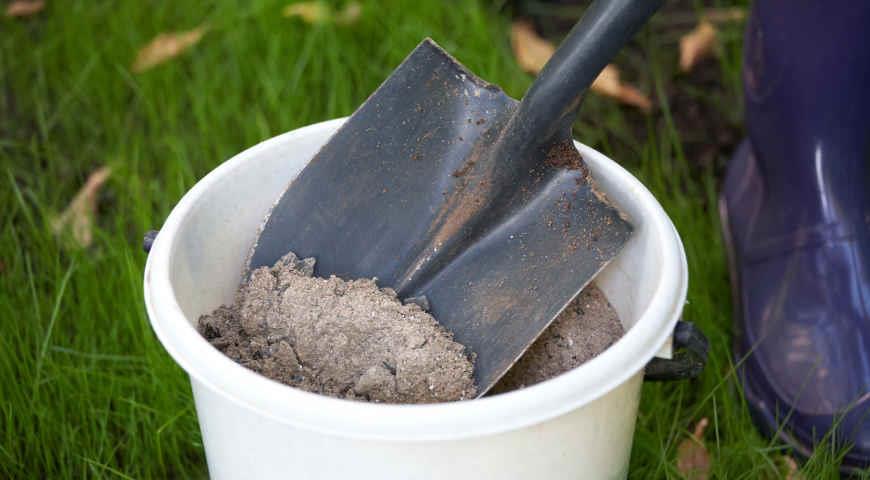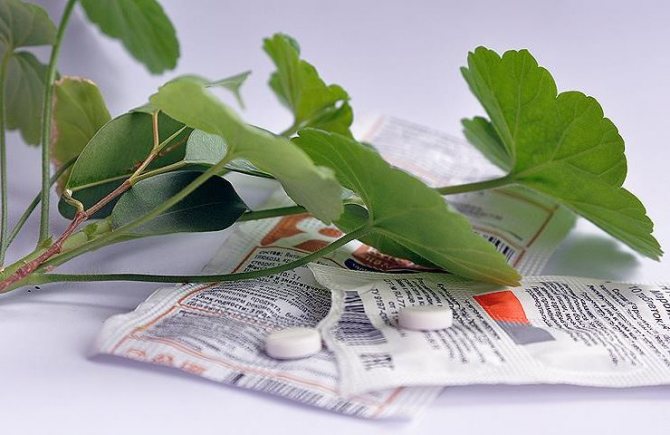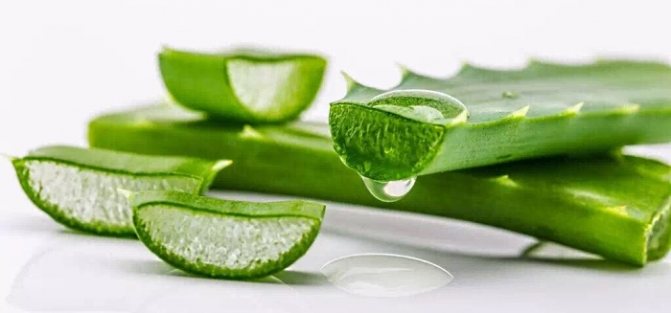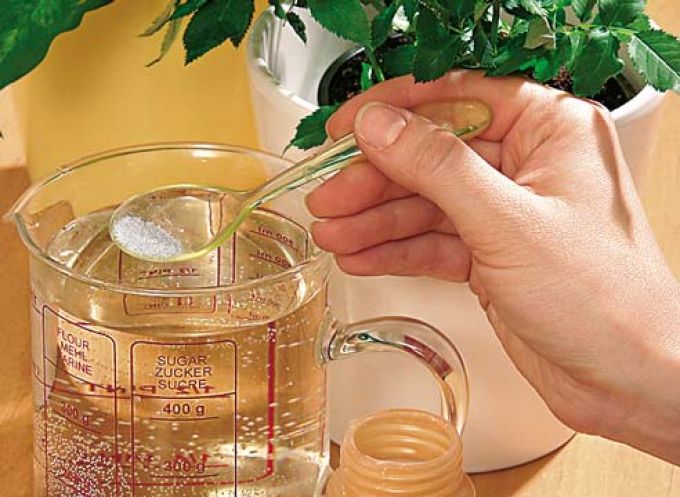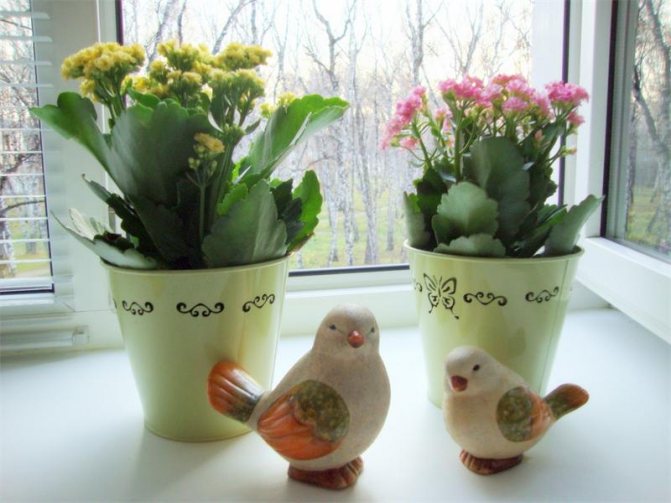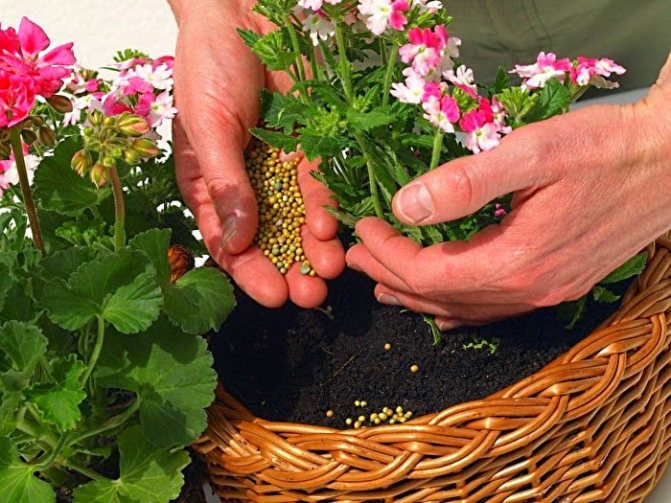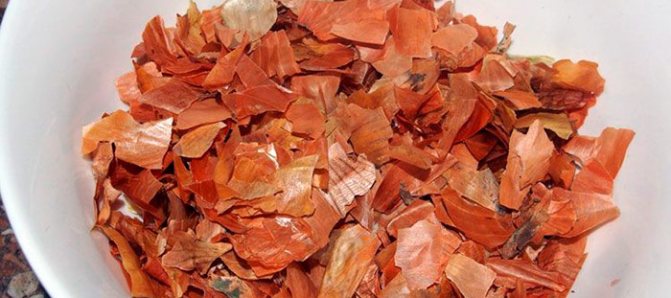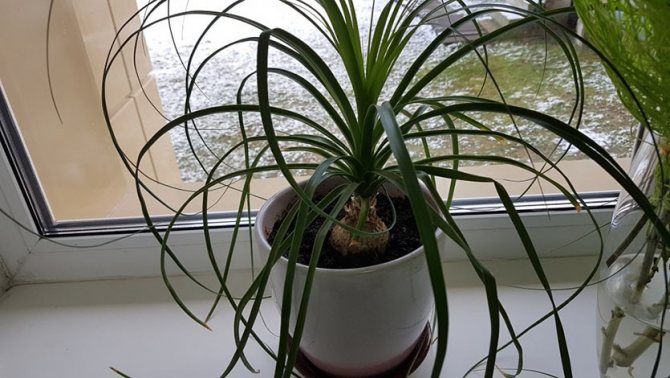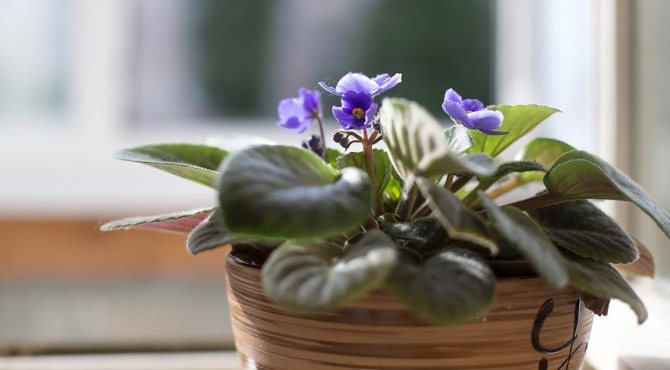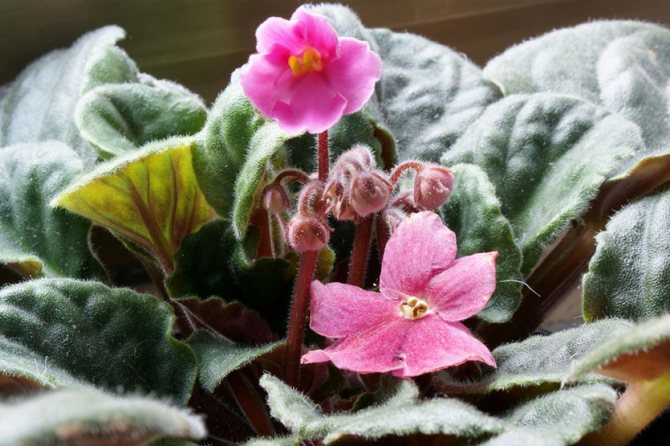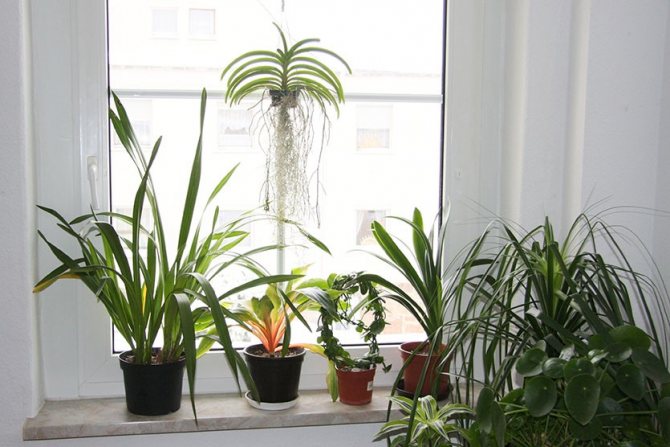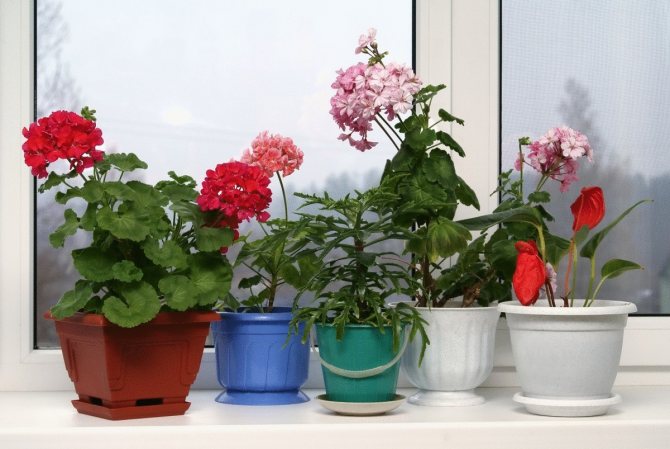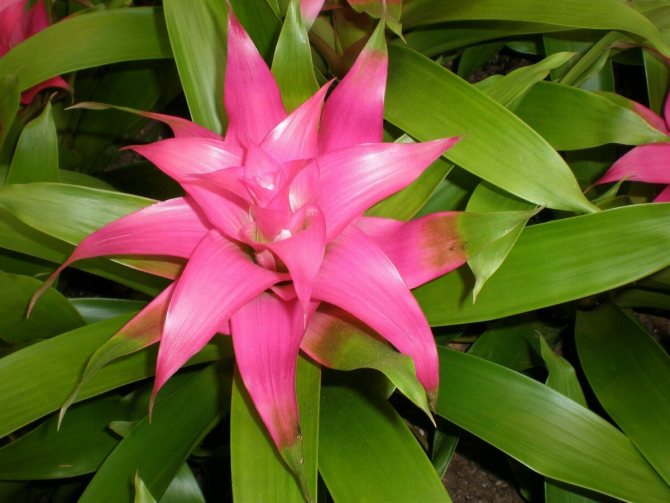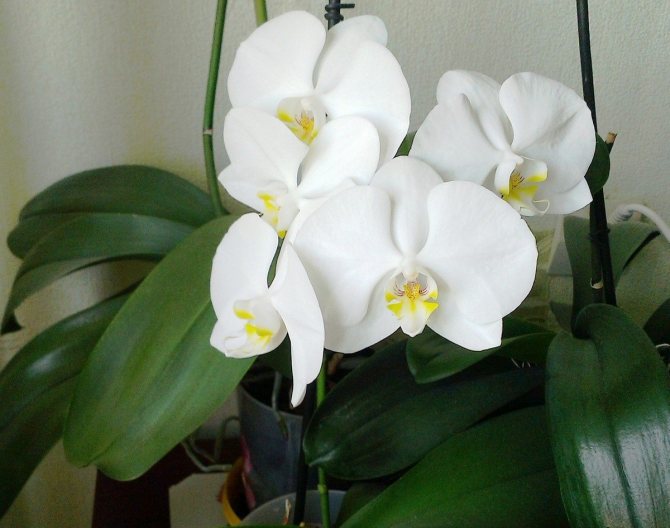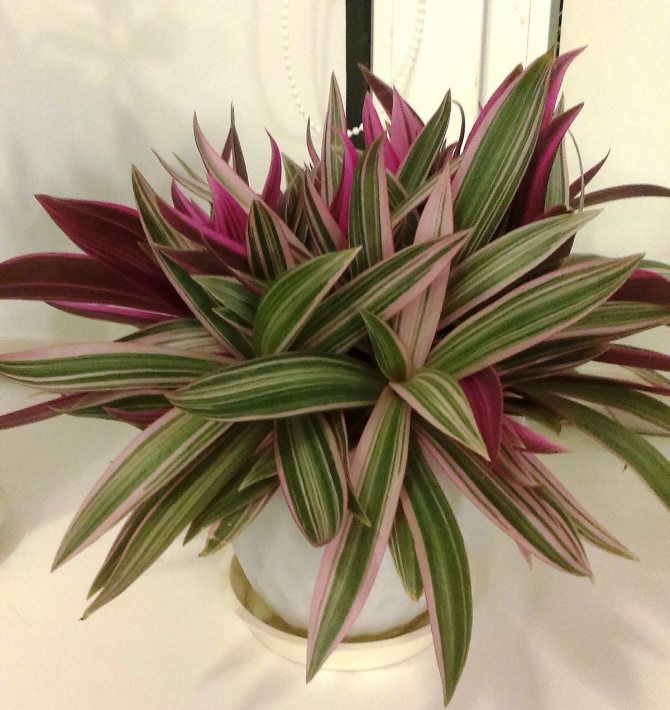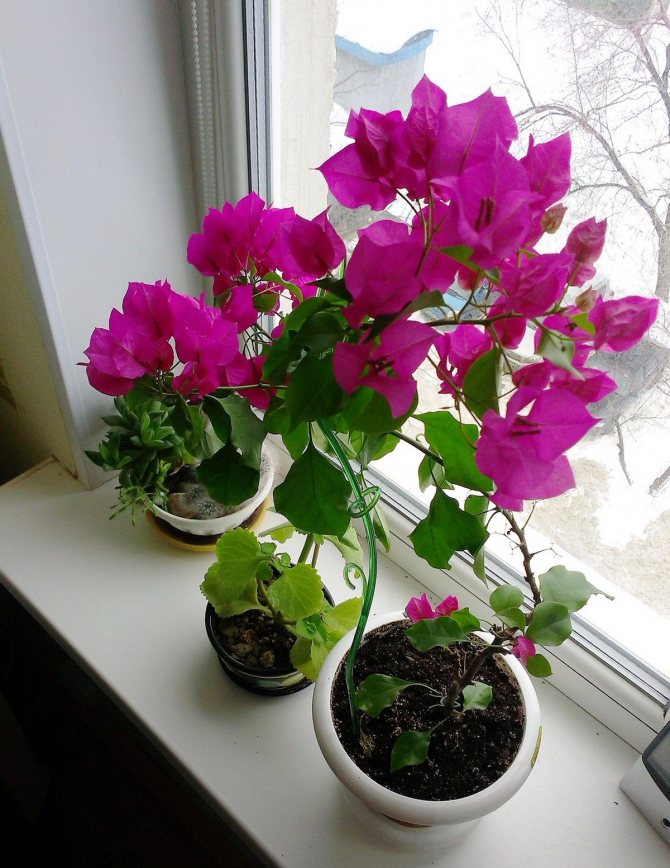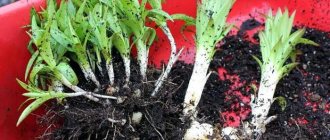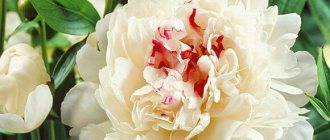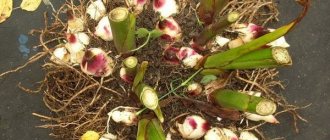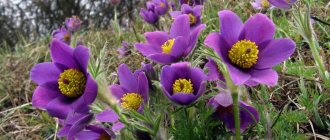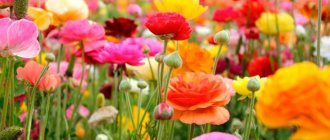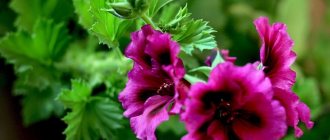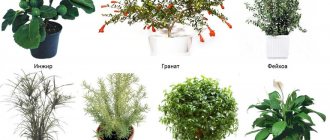Category: Houseplants
All living things need rest from time to time, and indoor plants are no exception to this rule, especially since with the onset of autumn, the days are getting shorter, and the plants begin to lack light, and because of the heating devices working around the clock, your flowers also suffer from dryness. air. Therefore, the best you can offer them from November to April is to plunge into a state of calm.
General feeding rules
Before figuring out how to feed indoor flowers in winter at home, let us recall how this is done in principle. There are not many rules, but it is worth remembering about them.
- Top dressing is not applied to dry soil! Even diluted, they can burn the roots. At first, the plant is watered in a slightly smaller volume than always, and only after a couple of hours fertilizers are given.
- It is better to feed the flowers in the evening, when the active sun exposure subsides, there is less evaporation and the flower can fully receive nutrients.
- Do not violate the recommendations for diluting fertilizers. More than prescribed by the instructions, the plant will not be able to absorb the fertilizing, and it is quite possible for it to burn the roots.
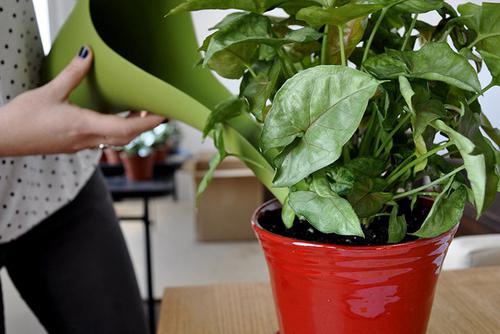
Houseplant care: comfort and temperature
Providing comfort to indoor plants is an important task for amateur flower growers. Wipe dust off the leaves, and for some green favorites arranging a cleansing shower is only a small part of the work. Flowers are gentle creatures that are afraid of drafts and sudden changes in temperature.
The windowsill, especially the south side, is great for getting enough light, but the presence of batteries and fluctuations in heat and cold (coming from the cracks of the windows) contribute to the wilting of the plants. A humidifier, sealed windows will help solve this problem.
The leaves should not come into contact with the glass, and it would be good to arrange the pots so that there is some distance between them - it is better for the plants not to touch each other.
For heat-loving flowers (these are orchids, calatheas, shefflera, coffee tree) we are looking for a place not on the windowsill - here they will feel bad.
If the green pets have begun to fade, then it's time to warm them up. This can be done with a foam pad under the pots. During severe cold snaps, we cover the windows with blankets or wooden shields.
Plastic containers are warmer than clay containers. This should be considered with some plants. Ceramic pots can be temporarily wrapped in warm rags.
When you can't fertilize
There are often situations in which feeding is strictly prohibited or, in any case, strongly discouraged. Firstly, this is the period of plant disease or the time of attack by pests. First, this problem is solved, and only after complete recovery, they begin to carefully and carefully support the weakened flower.
It is not worth fertilizing only purchased plants: when they are industrially cultivated, so many stimulants and minerals are introduced into the soil that they need time to master the existing fertilizing. You can feed such flowers for the first time only after a month, when they will confidently take root in your home.
You need to take a pause after the transplant.If you have correctly selected the soil, it contains everything necessary for the survival and comfort of the plant. In addition, the roots are damaged during relocation, even if you were extremely careful. Fertilizers in such a situation will not only not be absorbed, but can also harm.
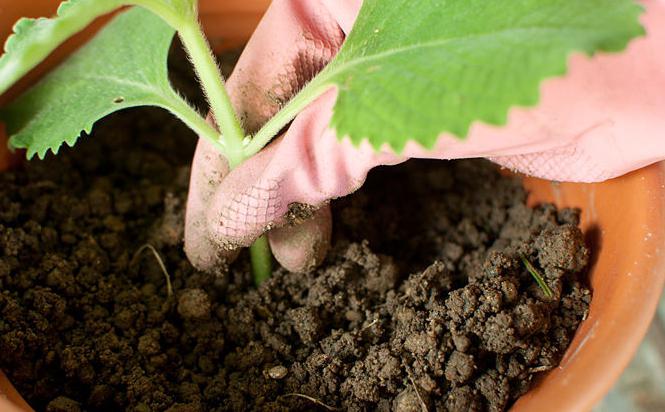

There are also special rules about how often and how to feed indoor flowers in winter: during this period, plants are especially vulnerable, so we will talk about this in detail and separately.
Abutilon
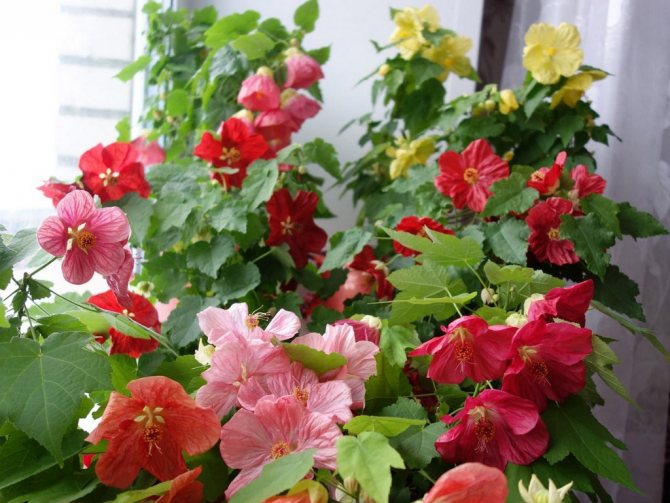

People call it indoor maple. They say that this plant is able to relieve depression, relieve tension and stress. Evergreen abutilone loves hot sun and moisture. But at the same time, he is completely undemanding in care and sometimes forgives some mistakes for novice growers. It can be grown in the form of a bush, tree, or even an ampelous plant.
When fertilizer is needed immediately
If you rarely remember that the soil for plants needs nutritious, that they cannot survive on one water, then over time you will observe the sad consequences of your forgetfulness:
- flowers stop growing or growth slows down very much;
- the stems are strongly elongated, become thin, brittle and weak;
- the leaves become small, pale, lose their color and droop, their dropping or the appearance of unhealthy spots is often noted;
- theoretically, flowering plants refuse to bloom;
- plants almost do not resist diseases (if you regularly have to treat them, it's time to think that you are doing something wrong).
If you find such symptoms, you will have to fertilize as quickly and gently as possible, otherwise you risk being left without a home garden. If fasting is noticed out of season, you will have to puzzle over how to feed indoor flowers in winter at home so that weakened plants can assimilate fertilizers. In summer, spring and autumn, you can use universal dressings as usual.
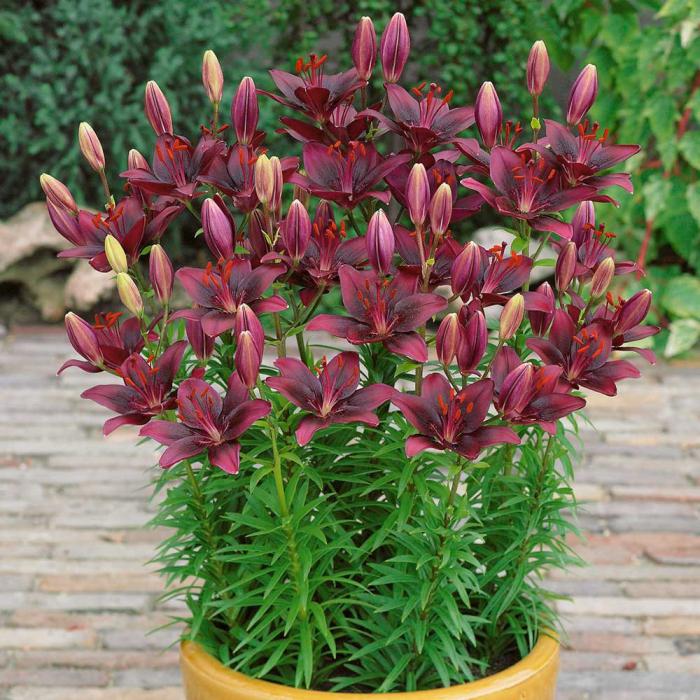

Illumination
It's no secret that one of the main problems of the autumn-winter period is the lack of sunlight. And this problem is especially acute for light-loving plants, which do not have enough winter light. For such colors, you should consider options for additional lighting.
For example, after the sun has gone down, you should turn on the fluorescent lamp. Also, check the flowers that you hid in the shade during the summer months, most likely they may have too little light in the winter.
Almost all light-loving plants react to a lack of light in the same way, their color fades, the internodes are stretched, and growth slows down. At the first signs of a deficiency in sunlight, you should rearrange the flower or put an additional source of light next to the flower.
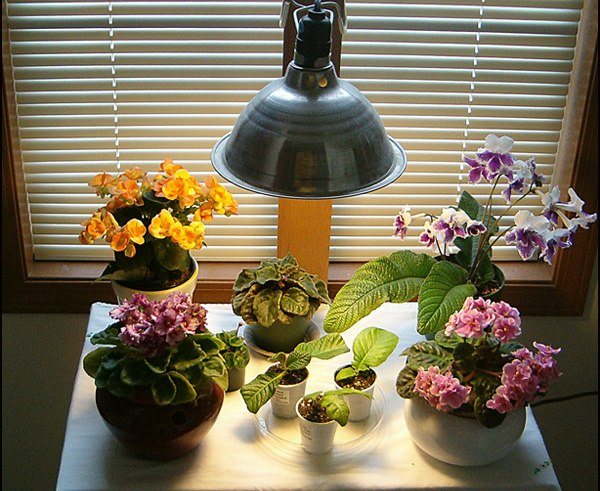

Clarifications for the winter
Most gardeners believe that plants should not be fertilized in cold weather. But professionals think that this is not entirely true. Of course, the frequency of application of fertilizers changes, in no case are growth stimulants given; and before you feed indoor flowers in winter, you will have to think in advance and change the composition of the dressings. However, you should not completely stop supporting, especially if there are flowering plants on your windowsill. Nevertheless, they spend a lot of energy on flowering and draw from the earth everything that it can give. So these specimens feed normally until they bloom.
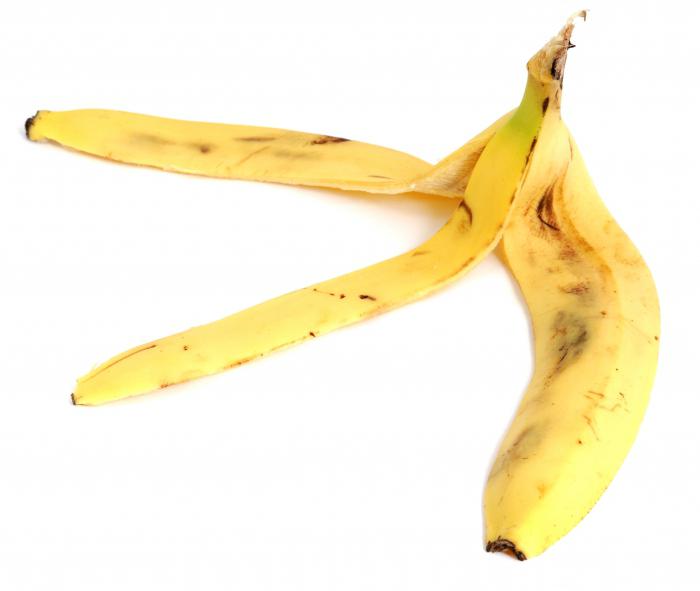

For the rest of the plants, it is enough to give fertilizers in a much lower concentration (it is halved) and much less frequently. Once a month will be enough - and so on until spring.
The variety of plants also greatly depends on how to feed indoor flowers in winter. Lily, for example, rests during this period. If she has lived with you for more than a year, then the above-ground part of her dries up, and the underground part is gaining strength.The pot is placed somewhere cool, the soil moisture is simply maintained in it until spring. If you have just planted an onion (in the fall), then it is being mastered in a new place, and it is not worth stimulating it until March. The same considerations apply to all colors that have a pronounced rest period.
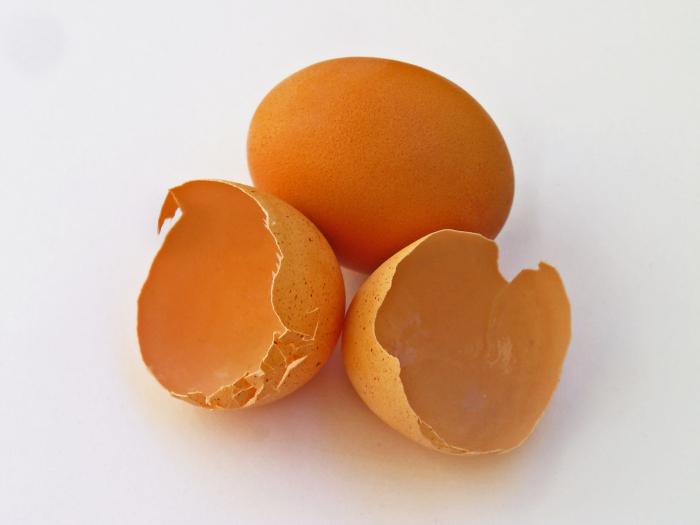

Clivia
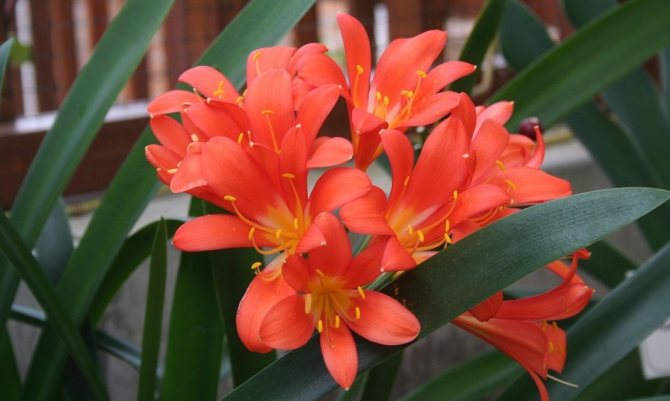

The flowering period of clivia falls at the end of winter. Large flowers and dark dense leaves of the plant are not demanding on sunlight, so the clivia can be placed away from the window. The flower is very unpretentious, caring for it is simple. The only thing that needs to be observed is moderate watering. Waterlogging can kill the plant. Clivia does not like to be disturbed, so she should be transplanted no more than 1 time in 3 years by transferring to a larger pot. And then only when its roots completely fill the space of the pot and begin to crawl out.
How to feed indoor flowers in winter: folk remedies
Many generations of plant breeders who cared about the health of their pets have come up with a significant number of "recipes" for how to feed indoor flowers in winter as gently but nutritiously as possible. The following are considered the most successful:
- The juice of the well-known aloe. A teaspoon of this substance is diluted in one and a half liters of water. Once a month it is used as a top dressing. Suitable for all plants.
- Infusion of pomegranate and citrus peels. You need to withstand a day. Also suitable for all colors.
- Banana skins infused for the same amount of time.
- When washing cereals (buckwheat, pearl barley, millet, rice), do not pour out the water, but use it for watering. Perfect soft fertilizer! The same applies to the water in which the dried peas were soaked.
- If the house has an aquarium, water from it (when changing) is started up to water the plants. Then chemical fertilizers will no longer be needed.
Orchid
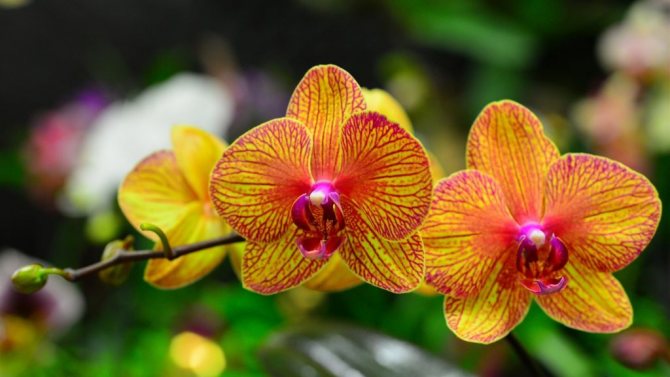

The favorite of all the fairer sex, striking in its beauty. An orchid or phalaenopsis is a tropical heat-loving plant, therefore, for its abundant flowering, it is enough to put a flower pot on the sunniest place in the house and provide the necessary air humidity. Direct sunlight can cause leaf burns, diffused light is ideal for it. If in your apartment the windows face exclusively to the north, then it is better to use a fluorescent lamp for full illumination of the plant. Recall that in winter, the humidity in apartments is on average 25-35% due to the operation of heating devices. To create a microclimate with a humidity of 65-80% necessary for an orchid, an air humidifier is suitable, if there is one in your household. You can humidify the air with a spray, or put a damp towel on the battery under the windowsill on which the flower stands.
Preventive measures: preparing in advance
In order not to guess how to feed indoor flowers in winter, you can do something ahead of time. During the spring transplant, you can go for some tricks that will provide your plants with everything they need until spring. They will also help a lot if there is a need for a transplant in the fall.
- Forest ground. It is necessary to take it under the oak trees, only the top layer. For a year, everything that it contains is enough for the head.
- When transplanting flowers that prefer acidic soils, a chopped fern is laid at the bottom of the pot.
Houseplant care: preparation for wintering
It is better to start preparing flowers for winter in the fall: if some plants do not stop growing, then by the next season they will lose their attractiveness or the ability to bloom.
Before wintering, the plants are treated with fungicides and insecticides against possible infection by fungi or pests.If there is no desire to use pesticides, then we wipe the leaves and stems with a cloth dipped in soapy water, while making sure that the water does not flow to the roots. We repeat the procedure in a week.
We remove all dry, damaged leaves. Due to the dry indoor air, the green parts often turn yellow and are exposed to pests, so the cleaning procedures will have to be repeated many times.
Some plant species completely retire, so we stop feeding them, and gradually reduce watering.
With gloxinia, caladium, you can do the following: stop watering them, wait for the leaves to die off, after that the tubers are dried, cleaned, placed in moss and stored in a cool place (basement, cellar).
If for some reason it was not possible to move the plants to winter, they will have to provide them with additional lighting and moisture - that is, to give them the opportunity to go through all stages of the growing season. Callas, eucharis, cyclamen will also have to be fed, since in autumn and winter is the usual time for their flowering.
General information about feeding indoor plants
The need for feeding is caused by the small area of the pot. And if the owner believes that the flowerpot is very spacious, the plant will still lack minerals. Useful microelements in the substrate are only enough for 2-4 months, and after this time, indoor crops need additional nutrition. Exceptions are specimens that are in a dormant period. While they sleep, they do not need fertilizer.
If the question arises: is it necessary to fertilize indoor plants in winter, it should be borne in mind that in the cold period the flowers slow down their processes, and the use of top dressing leads to soil salinity. And such an excess negatively affects the general condition. It is also necessary to fertilize flowers that grow under artificial light and continue to actively develop during a short daylight hours.
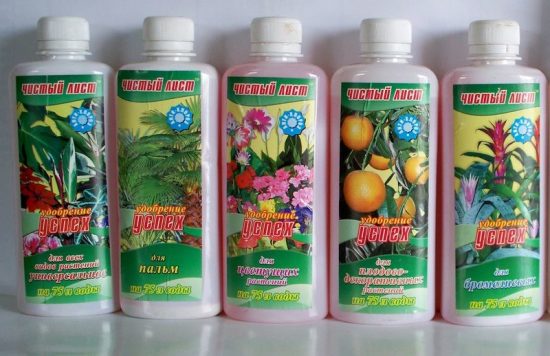

Certain fertilizers are intended for different types of plants.
It is advisable to feed the plants in the dark. During these hours, the flowers do not feel the sun's influence, evaporation is slow, and they receive full recharge.
There are such types of fertilizers:
- versatile, which are suitable for most indoor plants;
- for flowering specimens;
- for decorative deciduous.
These are basic dressings that do not exclude an individual approach to weakened flowers.
According to the form of introduction, they are:
- liquid - they are brought in with water during watering;
- long-acting (granules) - when buried in the soil, they gradually fill it with micronutrients;
- for the foliar system of plants (liquid form) - all foliage is evenly sprayed with such fertilizers.
Why they need to be fertilized
In different periods of the growing season, flowers need different trace elements. When there is active growth, it is necessary to fertilize the soil with nitrogen compounds. Thanks to them, indoor plants grow green mass. If buds appear, the flowers need phosphorus and potassium. Flowering is delayed - you need to add magnesium to the soil. Lack of potassium leads to the death of young shoots. If the leaves are stained, they lack iron. Weak roots signal the absence of boron in the soil.
It is possible to understand that some specimens need additional fertilizers by the following general characteristics:
- growth slowed down;
- the stems became weak and elongated;
- leaves droop, turned yellow, or faded;
- flowering is delayed;
- flowers do not grow, but remain small;
- lack of fruit on previously fruiting plants.
When flowers are weakened, they lose their decorative appearance and ability to resist diseases and pests.
Saintpaulia
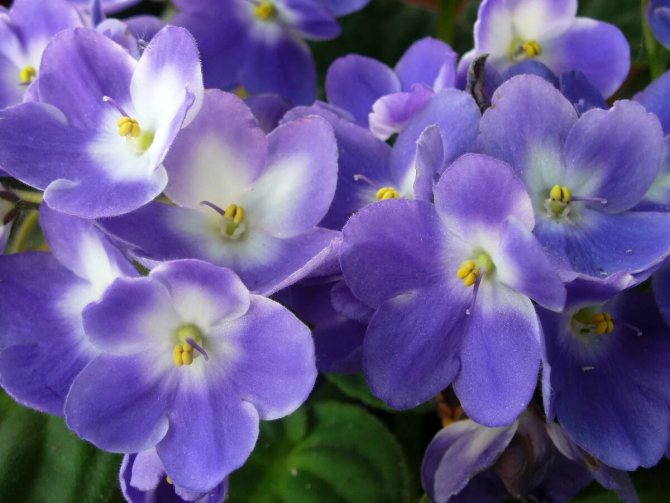

Saintpaulia or violet is considered a symbol of lovers. It is a very delicate and beautiful houseplant with a small period of vegetative dormancy. Saintpaulia can bloom throughout the year with short interruptions.For abundant flowering in winter, it is enough to put the violet on the windowsill closer to the sun. If the light is still not enough, you can supplement the plant with special “flora” lamps or ordinary fluorescent lamps. Saintpaulia needs lighting for at least 11-12 hours a day. The comfort temperature for a flower is 20-22 degrees. It should be watered through the pallet and not very abundantly.
Flower feeding
The purpose of top dressing is to restore depleted soil and maintain its nutritional value at the proper level. Soil fertilization is considered a simple plant maintenance task. But you need to understand that all flowers are different, they require an individual approach and strict adherence to the rules.
Indoor plants are divided into several types:
To take care of their health, you need to know what exactly to feed this or that species and during what period to do it.
Ornamental deciduous plants
These include the following instances:
- ficus;
- begonia;
- dieffenbachia;
- dracaena;
- calathea;
- ivy;
- tradescantia;
- alpinia;
- cardamom;
- rosemary.
These plants quickly deplete the substrate, and replacing them in a new pot does not solve the problem. They need to be fed in a timely manner. In autumn and winter, you do not need to fertilize. Ornamental deciduous varieties cannot be abundantly and often fed with fertilizers, since they rest in winter. But if the trunk is bare from below, or the plants look very drooping, it means that they lack nutrients.
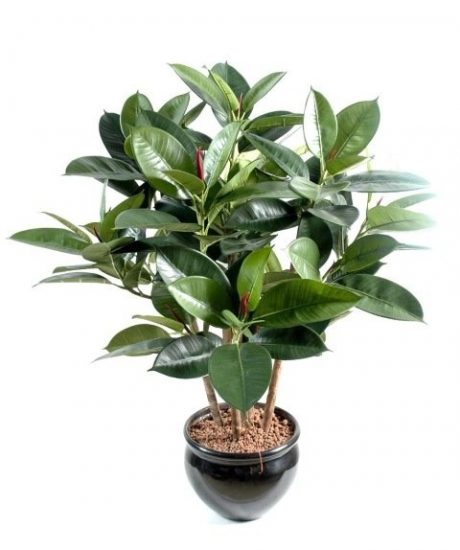

Since the dormant period begins in the winter season, ornamental deciduous plants do not need feeding.
The composition of fertilizers must contain all the necessary micro and macro elements. Such complete nutrition can be provided by specialized feeding from flower shops. They contain all the essential additives you need, such as potassium, nitrogen and phosphorus - the three ingredients for the healthy growth of all ornamental foliage plants.
Mineral fertilizers for these flowers are:
- dry (powder, granules, tablets);
- dried (prolonged sticks);
- liquid (solution).
The fertilizers include:
- mineral substances: chemical compounds, rock particles, industrial waste, salts and geological deposits;
- organic matter: waste from birds and animals, vegetable compost admixtures, food waste.
In summer, these species are fertilized once every 10-14 days. In winter, if the plants do not look good, they are fed every two months, reducing the dose to half the required amount. An excess of minerals is contraindicated for cultures at rest during the cold period.
Fern
It belongs to ornamental deciduous plants and feels great in the forest. But in the city it reacts to the polluted air. For his life, moisture and oxygen access are important, and he does not really need feeding. It can be fed with standard houseplant fertilizers once or twice a month by adding the nutrient fluid to the pan. The concentration should be half that for flowering specimens. Organic fertilizers or potassium supplements can be used.
Decorative flowering specimens
This vast blooming group is very popular. Some plants bloom at different times of the year, others all year round, others delight with berries and fruits.
These include the following instances:
- azalea;
- primrose;
- hibiscus;
- asparagus;
- begonia;
- gerbera;
- cyclamen;
- fuchsia;
- gardenia;
- plumeria;
- anthurium;
- rose flower;
- Phalaenopsis orchid;
- chrysanthemum;
- Kalanchoe and many others.
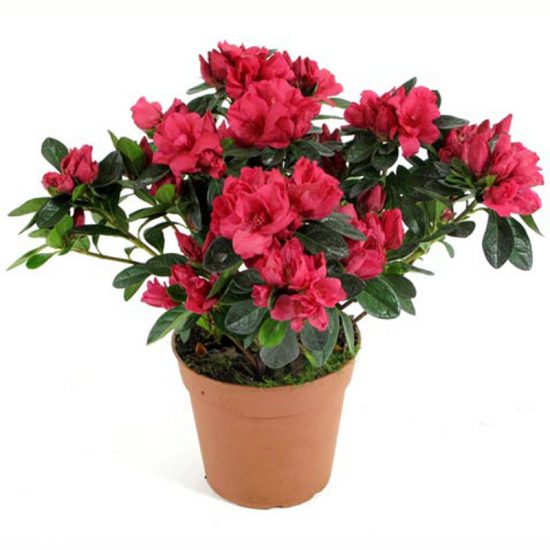

Flowering and fruiting plants need feeding in the cold season.
When vegetative development occurs (early spring and summer), the flowers are fed 1 or 2 times a week. From the beginning of autumn, the dose should be reduced by half, fertilizing the plants monthly.If some species bloom in winter (orchid, eucharis, calla lilies, pelargonium), granular fertilizers should be used for feeding, which regularly and dosed nourish the soil in the pot.
The best feeding for decorative flowering plants is nitrogen fertilizers with a reasonable ratio of potassium and phosphorus. Nitrogen promotes the growth of green mass, and phosphorus stimulates the formation of buds. Potassium is essential for the full development of all parts of the plant.
Plants requiring complete rest in winter
Some orchids (certain types of dendrobiums, tunias and playones) need complete rest in the winter. The leaves of these plants die off for the winter, so watering is gradually reduced to naught, allowing the earthen coma to dry completely. The ideal air temperature is from 8 ° C to 10 ° C. The lighting is bright.
Plants such as hippeastrum and gloxinia also need absolute rest in winter. Leaves and stems die off by the end of the growing season, and all processes in tubers and bulbs slow down. After complete drying, the leaves must be removed, and the pot with the plant must be covered with a saucer or a plastic bag with holes and removed to a dark place with an air temperature of + 12 ... + 15оС. If there is no such place in the apartment, you can put the container in a black plastic bag and leave it on a cool windowsill, away from the battery.
From time to time, the soil in the pots is slightly moistened to prevent the coma from drying out completely. With the beginning of spring, tubers and bulbs are transplanted into a new substrate, slightly moistened and placed on a light window. With the advent of sprouts, they begin to give top dressing.
When to feed flowers
Knowledge of certain norms and laws will allow you to grow a powerful and graceful houseplant:
- Fertilization is carried out at the stage of active flower development. From April to mid-October, the home flower needs regular feeding. As for the winter period, feeding indoor flowers in winter should be minimized.
- They begin to feed the plant even when green leaves begin to appear, stretching up to the sun.
- If the flower does not bloom for a long time, then most likely it should be fed.
- If the buds are tied and their growth has stopped. This indicates that the flower does not have enough vital energy and it just needs feeding.
- In the case when a flower, for no particular reason, began to drop leaves.
- The indoor flower is stunted and painful.
- The most important thing is to apply fertilizer correctly so as not to injure the root system. This means that feeding is carried out only after watering the plant and not before watering. If you do not adhere to this sequence, then you can burn the root system. There is one more principle that should be followed. Each plant needs its own type of fertilizer and should not feed all houseplants with one type of fertilizer.
Strelitzia
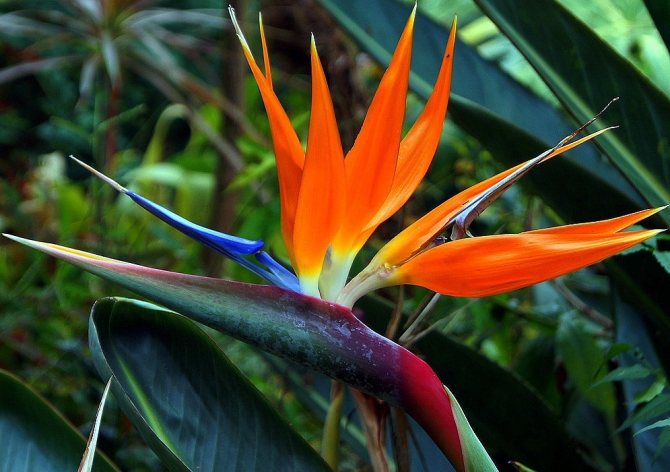

A tropical beauty with exotic flowers, similar to small bright birds, may well delight you with its flowering during the winter period, and sometimes up to six months. In order for the plant to bloom its flowers in the cold season, it is enough to send it for a short rest in the autumn in cool conditions with a temperature of 12-14 degrees, reduce watering. After a couple of months, return it to a sunny western or eastern window, increase the humidity, and the strelitzia will bloom with renewed vigor.
How to fertilize flowers?
Before thinking about how to feed indoor flowers in the winter at home, you need to decide what to fertilize them with. Many people are familiar with the so-called complex mineral fertilizers, the structure of which includes several basic trace elements, such as nitrogen, phosphorus, potassium and others. Depending on the type of plant, the percentage of nutrients may be different.In this case, it is very important to know how to fertilize indoor flowers in winter at home, since more phosphorus is required for decorative flowering plantations, in contrast to decorative deciduous plants, where more nitrogen is needed.
Mineral fertilizers are generally preferable to purchase in liquid form. The concentration must comply with the standards indicated on the package, and they are applied only in diluted form.
If you purchase drugs such as potassium sulfate, potassium chloride or potassium salt, you can mix potassium fertilizers yourself. For this, 1.5 g of the drug is taken and diluted in 1 liter of water. This approach allows you to get nitrogen fertilizers if 1 g of urea, ammonium nitrate or ammonium sulfate is split into 1 liter of water. It is possible to prepare phosphate fertilizer from ordinary superphosphate if 6 g of it is mixed with 1 liter of liquid.
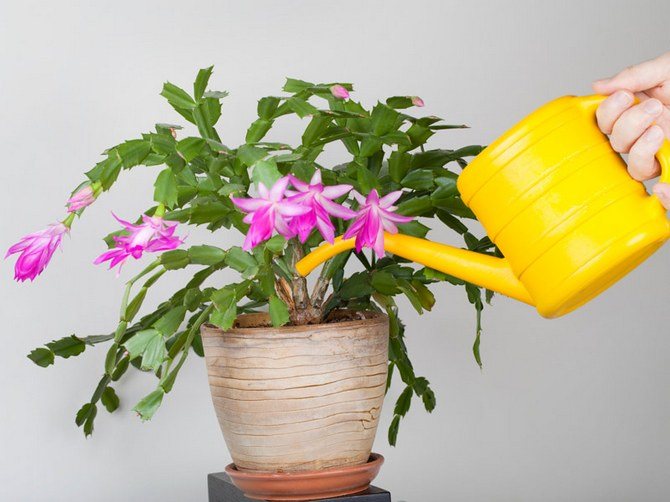

What to feed
For home flowers, a high-quality universal solution may also be suitable, which you can purchase at a flower shop. However, if you want to choose fertilizers designed for a particular type of indoor flower, you need to make the choice relying on knowledge of their basic needs. For example, nitrogen, potassium and phosphorus are suitable for violets, so buy top dressing depending on the presence of these components in its composition.
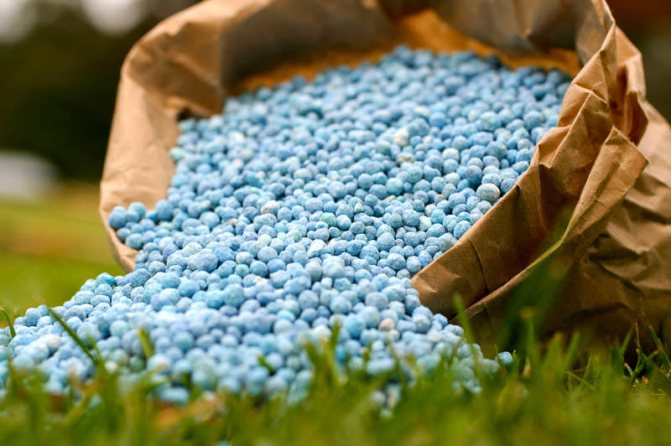

There are many plants that require saturation with both organic and mineral substances. These include spathiphyllum.
Florists do not always give preference to store-bought fertilizers. Sometimes homemade "mixes" can serve as a good alternative, which can be prepared from those products that are almost always at hand.
Among the most famous recipes are:
- aloe juice solution. For 1.5 liters, you only need 1 tsp. liquids. It is a versatile folk remedy used to nourish a variety of indoor flowers. You can water the substrate with it monthly;
- infusion of pomegranate and citrus peels. They must be filled with warm water and left for a day. After that, you can use the solution to nourish the plants regularly;
- a plant nutritious composition of banana peels is prepared in the same way;
- the water in which you soak cereals (rice, buckwheat, millet, pearl barley), as well as peas, is considered optimal for watering indoor flowers, as it is characterized by a certain softness;
- Aquarium water is another useful nutrient for nourishing your plants.
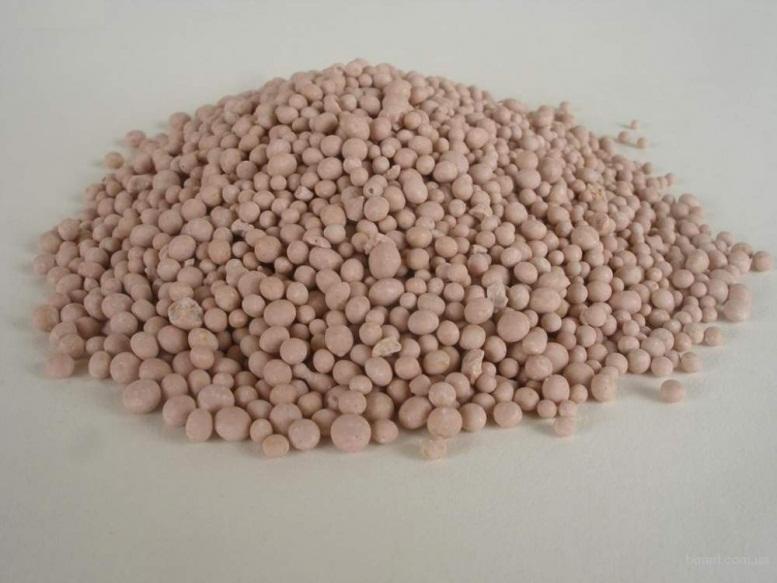

Use these popular home flower care methods, combine them, and the result will be as good as after applying store-bought fertilizers.
Winter: caring for ornamental plants
Caring for indoor flowers in winter is somewhat different from looking after them in summer. The fact is that most home flowers, when winter comes, weaken or stop their development and growth. Only a few of them, the flowering period of which falls on December-January, continue to develop actively. Some try to feed indoor flowers in winter to bloom more luxuriantly. At the same time, not everyone knows that winter feeding can harm the plant, since it does not absorb nutrients in the proper way. It is best to prepare the plant for wintering, and feed it before the flower leaves for winter rest.
For some home flowers, winter feeding can be carried out no more than once every month, and then at a lower concentration, then there will be no question why indoor flowers turn yellow in winter. Again, you need to know well how indoor flowers behave in winter (specific species) and only then proceed with the appropriate care.
Determining what you can feed indoor flowers in winter, folk remedies have a wide range of approaches to solving this problem. As far as we know, in any natural material there is a whole range of various necessary substances.It is enough to pour, for example, the peel of bananas, lemons, oranges with boiling water and insist, then you can water the flowers in winter (naturally rarely), which will support their vital energy. There are other approaches, for example, some owners of home flowers water them with tea or coffee. Be that as it may, in winter you need to be very careful not to overmoisten the soil.
Algorithm for feeding decorative indoor plants:
If you follow a certain set of rules, then home indoor flowers will invariably delight you with rich flowering and a lush crown.
- An excess of fertilizers can be more harmful than a lack of them, so it is better to underfeed the flower than to overfeed it.
- The plant is fertilized only in the case of its normal growth. If the plant is transplanted or it gets sick, then fertilization is not necessary. In case of his illness, it is better to determine the cause of the disease and only then engage in feeding him. There is a high probability that the flower is sick from an excess of applied fertilizers.
- In winter, it is better to leave the plant alone so that it can gain strength for the next season.
- During periods of extreme heat, it is better to abandon fertilization.
- It is not necessary to buy fertilizers, you can use home-made feeding.
- It is not recommended to apply fertilizers so that they fall on the leaves.
- A young flower allows for a lower concentration of fertilizer.
- Ferns and orchids do not tolerate excess feeding, therefore, when adding nutrients, this factor should be taken into account, making the solutions less saturated.
- At the beginning of growth, nitrogen fertilizers should be preferred, and during the flowering period it is better to add potassium and phosphorus.
- In winter, you should minimize feeding, based on the conditions for growing a flower, or abandon it altogether.
- In the case of a flower transplant, it is undesirable to feed it for 6-8 weeks.
- Before applying top dressing, be sure to water the flower two hours before.
- Good results can be expected from complex preparations, such as Azofoska, Nitrofoska, Rost, as well as Mitlider formulations.
- In the absence of a measurement, it should be taken into account that the container from under the matches holds 25 grams, a tablespoon - 10 grams, and a teaspoon - 3 grams of dry matter.
- Do not add nutrients to dry soil.
- Dissolve fertilizers only in a special (glass) container.
- Stir the solutions with plastic or wooden sticks.
- If foliar feeding is required, then fertilizers are sprayed with a spray bottle or sprayer.
- Some plant species, such as succulents, are not recommended to be sprayed at all.
Florarium is the best solution for winter maintenance of plants
Miniature flowers can be placed in florariums for the winter. Often, ordinary aquariums of various shapes are used for these purposes, since special glass pavilions for indoor flowers are very expensive. Most plants in such conditions feel great not only in the winter season.
The special microclimate creates optimal conditions for the growth of flowers - the absence of drafts, high humidity and a stable temperature are liked by most indoor residents. A well-created composition of various species will become a charming interior decoration.
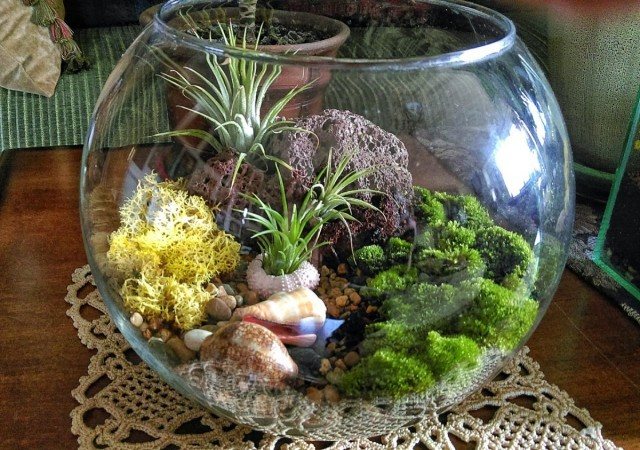

Miniature plants can be placed in florariums for the winter.
Content rules
We equip the window sill
With the onset of winter, the air temperature near the window drops to +5 degrees on average. Therefore, it is important to insulate the windowsill so that the plant can receive natural light.
With the arrival of severe frosts, it is recommended to hang the window with polyethylene foil. It is attached to the tape. Place a foam roller under the frame, having previously wrapped it in plastic. Place the foam plates on the windowsill itself, and you can put flowers on top of them.
Plants that love warmth should be moved to areas that are warmer. You can place them in hanging baskets. To increase the room temperature, remove all covers from the battery and slightly raise the curtains. Place reflectors behind the battery for extra warmth. This can be an ordinary mirror or foil plates.
To get rid of the severe dryness of the air, which will inevitably arise, try to spray the plants more often. For large plants, wipe the leaves.
Airing
Flowers need airing no less than people. But in winter, it is dangerous to open the window. Because of what, stirring the plants on the windowsill is required so that cold air cannot get on them. For example, on the side of the window, while the flowers must be covered with a special shield. You can make it out of paper or film. After airing, the shield is removed.
If it was not possible to save the flower, and it has signs of freezing, then give it a cold shower. If this does not help, then cut off individual parts of the flower that are frozen.
During cold weather, the humidity in houses drops several times. Even human skin becomes drier during this period, it is not surprising that it is difficult for plants to survive this time. To create more comfortable conditions for them, purchase a hygrometer.
He will measure the level of humidity in the room, and you will always be aware of this indicator. You should also purchase special humidifiers. They are useful not only for green pets, but also for all inhabitants of the house.
A home fountain can also be a way out. In addition to good air humidification, it will add beauty to the room, and peace of mind to people in the house. But keep in mind that such an additional element will require a lot of space.
Also in winter, when humidity is low, place all plants closer to each other.
When they are together, it is easier for them to maintain and maintain a normal microclimate for themselves.
Spraying and watering
Caring for indoor plants in winter requires a slight change in the usual watering. At this time of year, there is much less light and the flowers do not grow as intensely. When the plants are watered abundantly during the cold season, provided that the room where they are warm, they will begin to stretch.
At the same time, the stems will become thin and the leaves will be small. To prevent this, water them only once a week. Feel the ground, water is only needed when it is dry.
Spray the flowers more often and loosen the soil. Then it will be easier for air to penetrate to the roots. There are plant species that do not require frequent watering during the winter. They know how to store fluid in their tissues. For those flowers that require moderate watering even in the summer.
There are some types of flowers that do not need to be sprayed, otherwise their leaves may start to rot. They are placed on pallets, inside of which there must be damp pebbles or expanded clay.
Plants with large leaves should be watered sparingly and only on condition that the topsoil has already dried at least 1 cm deep. If you have plant species that do not tolerate moisture well, even in cold weather, water them with care. Frequent watering will lead to waterlogging of the soil.
Rest
Some varieties of flowers require retirement during the cold season. For example, cacti. It is necessary to gradually reduce the number of watering these flowers, and completely abandon fertilizers.
Lighting and feeding
When thinking about how to care for indoor flowers in cold weather, it is important to remember about lighting. Indeed, it is during such a period that they really lack natural light. To add light for a few hours, turn on lights near your home every day. With clean leaves, flowers absorb light more easily. Therefore, always keep them free of dust.Since February, you can refuse backlighting, because the day is getting longer and there is more light.
If the flowers do not show signs of active growth, you can refuse feeding. Mineral substances will be poorly absorbed, which will lead to salinization of the earth and a negative effect on the roots. Plants that grow actively all year round, especially large-sized ones, should be fertilized.
But do this only once a month, and not like in the warm season. In February, you can switch to summer mode. It is recommended to reduce the dose of top dressing, which is indicated on the package, by 2 times in the cold season.
Those types of plants that bloom in winter and spring should be fed regularly. Better to choose granular.
Heat-loving plants
The optimum temperature for their wintering is 18-22 ° С. This list includes aphelandra, codiaum, shefflera, coffee tree, ficus, calathea, aroids, bromeliads, philodendron, arrowroot, aglaonema, royal and ever-flowering begonias, cissus, most orchids, etc. Heat-loving plants are placed at the window on tables or flower stands, but not on the cold floor. Warm soil is an important condition for their vegetation, so you should provide the right temperature for these indoor plants in any of the possible ways: arrange a stand made of foam plastic, wood, put on a warm heating pad (but you should be extremely careful with this technique!), Etc. If it is large a pot with a tub plant (ficus, coffee tree), you should raise it from the ground, placing it on a stand, a stool.
They overwinter relatively well in indoor conditions.
Aglaonema, aloe, anthurium, aspidistra, royal begonia, hibiscus, krinum, spurge, monstera, nolina, sansiviera, spathiphyllum, tradescantia, uzumbar violet, rubber ficus, chlorophytum, hoya, cissus, eucharis. The same applies to cacti, plectranthus, ivy, yucca, but they, especially the yucca, need a lower temperature for normal wintering.
How not to dry out a flower
In winter, plants blooming in pots suffer greatly from the unfavorable microclimate in the apartment. And all because the heating devices work constantly, the air becomes excessively dry. For flowers, this is akin to death.
So that the house plants that have overwintered in the room do not lose their color saturation, do not wither and become lethargic, it is recommended to remove them away from batteries and various heaters in winter. At the same time, try to humidify the air in the room from time to time.
You can take care of the blooming greenery so that the microclimate is not excessively dry, as follows: in addition to the main watering and spraying flowers, place containers with water in the house. When it evaporates, the air in your home will be somewhat humidified, which will have a beneficial effect on the development of flowers.
What watering is needed in winter
The next question of how to care for indoor flowers in winter is watering indoor plants.
Watering plants in winter is not at all the same as in summer - after all, there is less light in winter, and plant growth slows down. If watering is plentiful in winter, and the apartment is warm enough, the plants begin to stretch, but their stems are thin and the leaves are small. To avoid this, plants should be watered no more than once a week, or only when the potted soil dries up. Instead of frequent watering, plants should be sprayed with clean water from a spray bottle, and the soil should be loosened - this will allow air to better penetrate to the roots of the plants.
There are indoor flowers that practically do not need to be watered in winter - these are the so-called succulents that can store water in their tissues - cacti also belong to them. They are watered sparingly, even in summer, when it is hot and dry. By the way, in winter they also like the lowered temperature, and in general all plants should be kept away from heating devices or fireplaces.
Plants with large decorative leaves are watered sparingly in winter, when the top layer of soil in pots dries up to a depth of about 1 cm.
However, there are some plants that love moisture even in winter - these are almost all flowering plants, but they must be watered carefully and not too often - it is impossible to overmoisten the soil.
Only some indoor flowers like waterlogged soil: for example, a brightly and beautifully blooming azalea - it blooms just in December and January; cyperus - he comes from tropical rainforests; calamus is a medicinal plant that grows in nature along the banks of rivers and lakes, and even in swamps and shallow waters. Such plants can and should be watered more often and more abundantly than other indoor flowers.
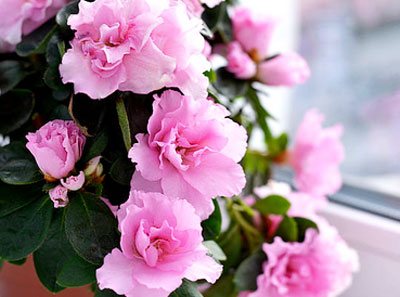

Any flowering plants should be watered with lukewarm water.
Watering
When colder weather sets in, you need to monitor watering; in the fall, it is usually reduced. If you continue to water the plants as usual, then the clod of earth will not have time to dry out, which will cause the death of the root system, and hence the death of the plant itself. It is very dangerous to water the plants during the autumn-winter period if the top layer of the earth is still wet. This is not summer, when water can quickly evaporate in a day and the soil can dry out in the sun.
Moreover, the plants wither equally from overflow and from drying out the soil, and with the inclusion of heating devices in winter, the second is very likely. And this means that with the connection of heat, the irrigation mode is again changed.
The soil in plants can be different, lighter or heavier, and it dries out in different ways. This must also be taken into account when watering. In general, we monitor the uniformity of watering and water the plants as the earthen coma dries.
Water for irrigation should be at room temperature, as cold water can also cause root rot. Is that azalea and cyclamen love ice water.
Clivia cinnabar, bright orange - Clivia miniata
The most common species is a rhizome plant of the Clivia genus of the Amaryllis family. Leaves are dark green leathery ribbon-like, arranged in two rows. The flowers are bright orange, yellowish-white at the base, 6.5 × 8 cm in diameter. This indoor flower blooms from February-March to April and again from September to November. It is a long-liver. In some houses there are old plants forty or more years old. About 30 flowers bloom on one peduncle.
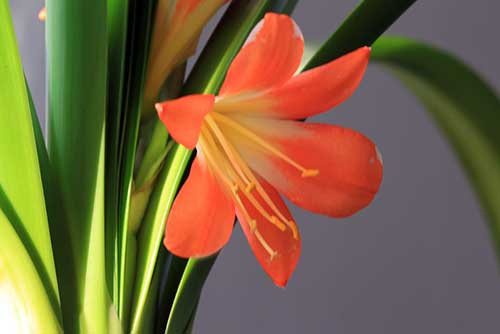

In the literature, it is found under the names: orange clivia (dull red, red lead, red lead), or kaffir (Cape).
If we want to see flowers of clivia, then it is necessary that before that it should stand in the "cold" at an air temperature of plus 8-12 degrees and a serious reduction in the frequency of watering. As soon as the flower arrow appears, the pot is moved to a warm room. The buds on the peduncles bloom alternately, which allows you to extend the flowering time.
The leaves of the plant can get burned by the sun's rays. Excess nitrogen-containing fertilizers are not needed, excessive soil moisture is dangerous. Clivias live better in cramped clay pots.
The plant is poisonous, especially the fruits and stems - limit contact of the flower with children and pets.
How to properly water plants in winter?
The question "How often, with what water and how to water indoor plants?" does not have a short and unambiguous answer. There are many moody plants that are very demanding on pH, mineral and salt composition and other aspects of water quality, watering method, amount of water, but these are topics for separate articles. Today we will talk about how to sensibly water the most common plants without tedious filtration, collection of melt and rain water and other manipulations.
Many chemical compounds (nitrogen oxides, sulfur dioxide, fluorine, chlorine) are dangerous to plants, chlorine compounds occupy one of the first places. Under the influence of chlorine, white spots appear on the leaves of plants, which dry and crumble.The maximum permissible concentration for chlorine is 0.15–0.20% for plants, while for humans it is 4–5%. If the water in your area is highly chlorinated, let it stand for at least a day to free it from volatile chlorine compounds. In the Moscow region, at the moment, the quality of tap water is quite high and is suitable for irrigation of the vast majority of common domestic plants.
First of all, two main questions need to be answered.
First, which group does the plant belong to in terms of water demand? (Table 2.1.)
Second, what cycle of seasonal development is the plant in? (Table 2.2)
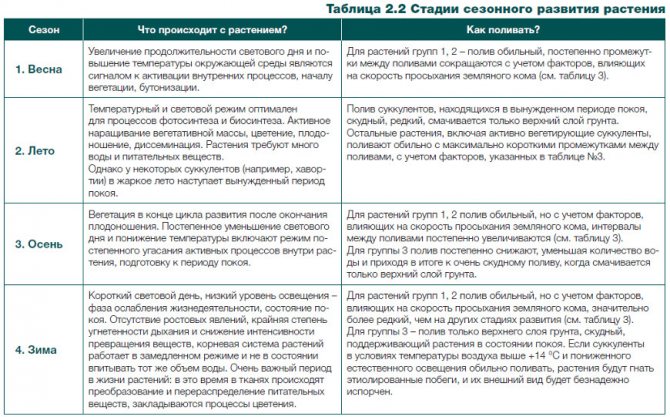

Features of winter care
It is with saving flowers from the cold that it is worth starting winter care for indoor flowers: in many of our apartments in winter it is not as warm and comfortable as we would like. There are enough reasons for this, and one of them is drafts: not everyone has high-quality plastic windows yet, and ordinary wooden frames and cheap double-glazed windows almost always let the cold through.
Vegetable diet for weight loss
Old windows with cracks should be sealed, since you cannot change them yet, and the flowers should be moved so that their leaves do not touch the cold window panes - it is because of this that leaves and flowers often shrink and crumble in winter. If possible, for the winter it is better to place flowers in the light, but not on windowsills - especially thermophilic species.
If the flowers remain on the windowsills, but it is still cool in the apartment, you need to insulate the flower pots - at least put them on foam plastic. Better, of course, to put all the pots in a spacious wooden box filled with foam crumbs, or put a soft warm cloth between the pots.
In cases where this condition is also impracticable - for example, due to the tightness in the apartment, you need to immediately choose not clay pots for planting flowers, but plastic ones - so they will be a little warmer.
Heat-loving indoor plants in winter should not be kept on the windowsill - they need to be removed where it is warmer, but they should have enough light. It is necessary to rotate flower pots regularly: in winter it is especially difficult for them to "catch" sunlight, because the sun does not rise as high as in summer. As soon as you notice that the leaves of indoor plants have begun to turn yellow and fall off, immediately rearrange them to a warmer place. However, flowers should not be rearranged often: they "get used" to a certain place, and constant movement can worsen their condition.
Home dressings for indoor flowers from our kitchen
The most varied composition of vitamins and microelements can be found in our kitchen. Feeding indoor flowers with home remedies is no worse than store-bought fertilizers, besides, they are completely natural. So do not rush to throw away onion peels, eggshells, orange and banana peels, coffee grounds.
What dressing for indoor flowers can be used and how to prepare them, my further story.
Yeast
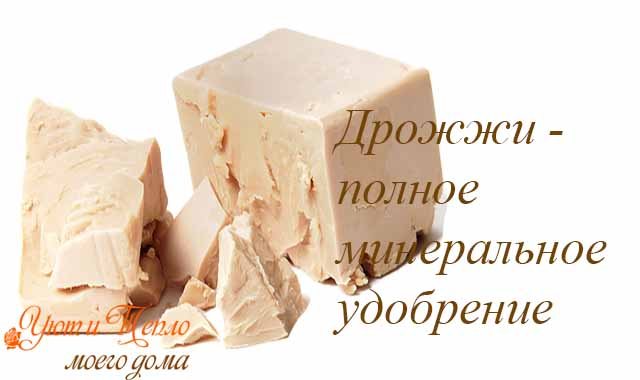

Probably the most famous, popular and effective flower dressing is yeast. After all, they contain a lot of usefulness, including phytohormones, B vitamins that stimulate growth, and others.
Yeast top dressing is equivalent to a complete mineral fertilizer.
It has a beneficial effect on the root system, causes increased growth and flowering, and also improves the microflora of the earth. Your flowers will grow by leaps and bounds!
Recipe
If you have natural compressed yeast, take 10 grams of it, stir in one liter of warm water, add a tablespoon of sugar.
Dry yeast should be taken 1 gram per liter of water + 1 teaspoon of sugar.
We insist this mixture for 2-3 hours.
Before applying top dressing, it will still need to be diluted with water in a ratio of 1: 5 (1 glass of infusion for 5 glasses of water).
Beer
Essentially the same yeast, only we are not talking about pasteurized beer from bottles, but about live beer, which is bottled in pubs.
If after some gatherings you still have a little of such a drink (although this is unlikely, well, do not regret it, leave at least a little for your pets), you can treat your plants as well.
When the beer hits the ground, it will continue to ferment there, releasing carbon dioxide, which will feed the plants.
Take 200 grams of beer per liter of water, mix and pour this solution once a week. You will see your plants come to life.
Coffee grounds
There is a lot of nitrogen in coffee, and plants are very fond of it, especially after winter. And this home remedy makes the earth loose and soft.
Having prepared and drunk the morning drink, we dry the remaining coffee grounds and put them in a jar, in a few days a pretty decent mass will be typed, which is enough for all your flowers.
Distribute a couple of teaspoons of dry grounds around the edges of the pot, loosen, water. It's that simple!
Tea brewing
We add dry tea leaves as in the previous recipe to the ground, this will be fertilizer for home flowers.
Or you can just water the plants with unfinished tea, even sweet tea. Ferns especially like to drink tea.
But do not overdo it and rarely use such a top dressing, because black flies also love it.
Sugar
Feeding indoor flowers with sugar gives them energy, so almost all plants respect sweet water, and cacti more than anyone else.
Dissolve one tablespoon of sugar in a liter of water and pour over the flowers.
Onion peel
Onion peels are useful for us not only for coloring eggs, but also a wonderful food for flowers from it!
We will need to prepare a decoction.
Put a good handful of husks in a saucepan, pour two liters of hot water into it and cook for 5 minutes over low heat.
After the broth has stood for a couple of hours, it should be filtered and used for spraying or watering flowers.
This broth is not stored for a long time, so discard the leftovers immediately. And the procedure can be repeated in a month.
Eggshell
Egg shells are rich in calcium, which is also necessary for our pets.
Therefore, we do not throw away the shells from peeled boiled eggs (you can also use raw ones), collect them, dry them, grind them in a mortar, crush or other convenient method. It is desirable very finely, in crumbs and even dust.
The crushed shells can be used for dry feeding of plants, sprinkling on the surface of the earth and burying.
Read also: How to make a voluminous Christmas tree toy with your own hands
Or you can insist them in water (a teaspoon of crushed shells per liter of water) and use them for watering.
Sometimes, when planting plants, a handful of shells are poured onto the bottom, which will nourish and enrich the earth for a long time.
Banana
The potassium in bananas is essential for flowering plants. It helps the leaves acquire juiciness and brightness.


Banana dressing is simple to prepare: a whole peeled banana needs to be thoroughly mash, pour a glass of water and stir until a homogeneous mushy mass. We feed our plants with this mixture straight from the spoon.
But we ourselves love to eat bananas, we often use banana peels for dressing.
How to cook
- Collect and dry the banana peel.
- Finely chop with a knife, grind into powder in a blender.
- We fill any jar to half the volume.
- Pour hot boiled water to the top.
- We close the lid and leave to brew for a day.
- We filter.
- Add water to the jar to the full volume.
- We water our plants.
Citrus
A good top dressing for indoor flowers is obtained from dried citrus peel. Prepare and apply in the same way as banana peels.
Aloe
If you have aloe growing at home, you can use it itself to feed flowers, or rather aloe juice. It stimulates plant growth well.
Cut the leaves, rotate them in a meat grinder and squeeze out the juice. For 1.5 liters of water, you need 1 teaspoon.
Garlic
You've probably heard that the flowers are also watered with garlic water.This is a slightly different top dressing - not for the growth and lush flowering of plants, but as a means for preventing diseases, strengthening immunity, disinfecting the soil and treating ticks.
You can prepare the infusion as follows: for 1 liter of warm or hot water - 4-5 chopped cloves. After 5 days of infusion in a dark place, the product is ready for use. Add three tablespoons of the solution to a liter of water and water or spray the leaves.
What flowers are watered with garlic water: orchids, violets, geraniums, dracaena and, in principle, any flowers, but not during flowering and no more than 2 times a month.
How to care for home flowers in winter: temperature when caring for plants
When caring for indoor plants in winter, keep an eye on them. If the glass is frozen over, iced up, then it is necessary to move the plants away from the windows at night. Near icy glass, the air is colder than room air by 10 ° C. The temperature regime during the day should be at least + 20 ° С in the mini-garden area, at night - within + 15 ° С. Also keep in mind that cucumber plants do not tolerate drafts and require high humidity. It is not difficult to humidify the air, for this you just need to place trays of water between the plants.
Plants of northern latitudes, grown in the room, and plants that shed their leaves for the winter, should be kept on cool windows, watered sparingly, avoiding, however, drying out the earthy coma.
How to care for indoor flowers in winter, whose homeland is rainforest? For coffee trees, cyperus, bromeliads, palms and other southern guests, the temperature drop is dangerous, so keep them year-round at + 18 ... 22 ° С.
Indoor flowers standing on the windowsill are advised to be placed on a platform made of polystyrene or wooden slats - in order to avoid hypothermia of the earthen coma. From the warm dry air coming from the central heating radiators, they will be protected by a shield made of thick cardboard or plywood.
Due to the lack of light, the leaves of variegated plants such as zebrina, golden scindapsus, lose their characteristic color, turn green. Therefore, when caring for these home flowers in winter, they need to be exposed in the brightest place on the window, it is best to keep them at a temperature not higher than +18 ° C.
Features of care after winter
Houseplants are transplanted in early spring, but only if they have "outgrown" their pot. If it is not yet cramped for them, you can simply update the top layer of the earth.
Watering of plants in March is gradually increased: flowers that are not afraid of moisture are watered twice a week, and succulents (especially cacti) - little by little and rarely.
Indoor flowers have a difficult time in winter, but it is within our power to help them: proper and caring care will help them to relax and maintain health, and in spring and summer they will grow and bloom again, delighting us with their beauty and aroma.
Transfer
Gloxinia tubers are planted in a new substrate. For earlier flowering of tuberous begonia, the plant is usually planted at the end of January. Before planting flowers in the soil, you need to place the heavily shriveled tubers for two to three days in sand or sawdust soaked in a weak solution of potassium permanganate.
In mid-February, tubers of caladiums, amorphophallus, sauromatums (ephemeroids) and rhizomes of coleria are transferred into a new mixture. The substrate for such plants should be slightly damp, but never wet (too wet a substrate will cause premature growth).
Reproduction
Cuttings
February is a good time for. Araucaria, sheffer, aphelandra, codiaum, crossandra, osmanthus, stevanotis, rafiolepis are cuttings. In order for the cuttings of these plants to take root, soil heating is used.
When breeding araucaria, it is preferable to take the apical cutting from the main trunk. You can use, for guaranteed rooting of cuttings, a stimulant - it will speed up the process of root formation.
For reproduction, Afelandras use well-developed leafy, but not yet coarse cuttings. Apical cuttings form roots on the twentieth - thirtieth day, and the stem cuttings of the aphelandra after fifty - sixty days.
Rafiolepis and osmanthus are propagated using lignified stem cuttings, the formation of roots occurs after 25 - 30 days.
Stephanotis is propagated by a semi-lignified shoot with at least two internodes, while the leaf blades should be shortened by one third. Young roots of the plant appear in a month.
Such indoor flowers in February as sambac jasmine, begonias, hydrangeas, clerodendrum require compulsory cuttings.
Seeds
Seeds of ever-flowering begonia, Waller's balsam, and zonal pelargonium are sown on seedlings in February.
Too small begonia seeds are sown with the help of snow. On a light substrate, consisting of sand and leafy earth in a ratio (1: 3), settle the snow (1 cm layer) and lightly take it.
Seeds are evenly placed on top. In the future, the snow will begin to melt and pull the seeds into the substrate. A container with seedlings is placed in a transparent plastic bag and kept in a bright room, darkened from the sun, while the film should not touch the ground. Waller's balsam seeds are germinated in the light.
Children will be interested in the idea of planting seeds of exotic fruits - kiwi, avocado, persimmon, date. After germination, entrust the young florist with the care and maintenance of the plant. This will not only allow the child to learn to love nature, but also make him responsible and diligent.
What kind of lighting do flowers need in winter
To keep your flowers comfortable at home, pay attention to the lighting when caring for them in winter. To add light to indoor plants, you can turn on electric lights near them for 2-3 hours every day. Daylight hours in winter are short, and it begins in November; geraniums, roses, begonias and fuchsias are especially affected by this.
Plant leaves should always be free of dust: clean leaves absorb light more easily. In February, the day becomes longer and there is no need for backlighting.
There are indoor plants that definitely need a dormant period in winter - if they are not provided with it, they may die. An example of such plants is the beauties of gloxinia, whose bright flowers look like small bells: in winter they must be cut off completely, and only the tubers should be left in the ground, and transferred to a dark, cool place - without drafts, but ventilated. There is no need to water the tubers: the pots with them are placed in plastic bags and tied, and at the end of February or early March, the tubers are transplanted into fresh soil. They begin to water them gently and gradually.
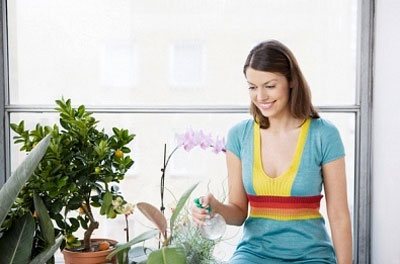

Bulbous blooming in winter
Growing indoor flowering plants in a pot, such as bulbous plants such as hyacinths, crocuses, daffodils, tulips, irises, is not difficult if you purchase bulbs specially prepared for earlier flowering. The normal planting time for forcing is September. In the warmth of the house, the bulbs begin to develop, but in order for them to bloom, the bulb needs to be kept in the cold for a while.
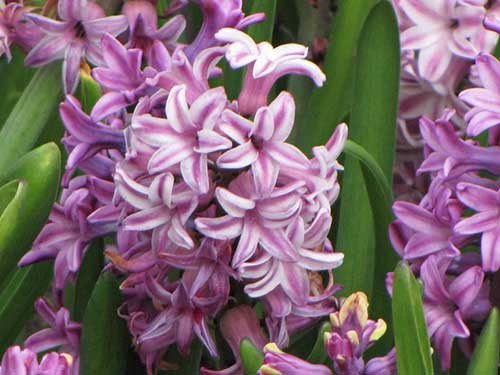

Bulbous plants in the winter interior appear due to distillation - artificial stimulation of flowering with the "transfer" of the dormant stage to an earlier date and the creation of conditions for the release of a flower arrow in the winter months.
On sale there are bulbs already prepared for flowering, which are aged in optimal conditions in the cold. The embryo flower is already sufficiently developed. These bulbs are usually larger, which guarantees large flowers.
After placing the bulbs in a sandy substrate or fine gravel, keep the pot in the dark until the flower-bearing stems appear. Bring the pots into the room when the sprouts reach 2.5 cm in height, no later than December 1. Water regularly. Leaves will begin to actively grow from the bulbs and after a while buds will appear.
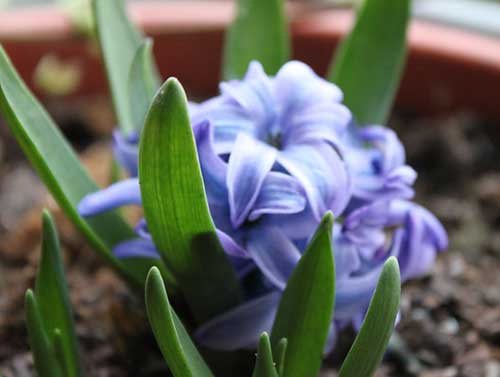

In order to enjoy the delicate aroma of hyacinths in winter, we advise you to distill them in a timely manner. To do this, place the specially prepared bulbs in a glass for distillation so that the bottom of the bulb does not touch the water. Keep hyacinths in a cool and dry place until the roots grow to the bottom of the glass - ...
Hardy
They adapt to almost any room temperature: ivy, aloe, cordilina, alocasia, tradescantia, aspidistra, pelargonium (geranium), clivia, cyperus, etc. In winter they can be placed on the windowsill, bedside table near the window or a little further. Ivy can be located in the back of rooms, on shelves. However, it should be noted that for some plants (such as aloe, pelargonium), lower temperatures are still recommended - 12-14 ° C, otherwise they may lose their attractive appearance.
Bromeliads: ehmeya, guzmania, vriezia ...
Some epiphytes bloom once in a lifetime, but unforgettable. The plant tops are crowned with bright inflorescences, reminiscent of bizarre cones, candles and stars. After flowering for several months, the exotic slowly fades away. The life of a plant is extended by rooting its shoots.
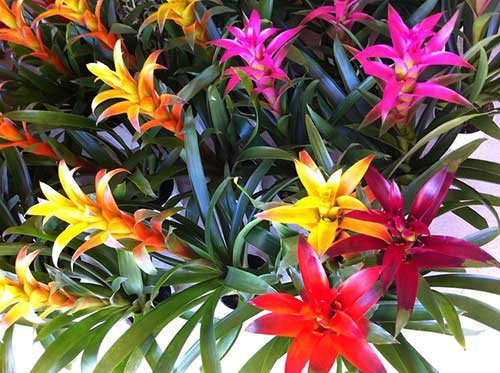

The photo shows blooming flowers in winter. An elevated festive mood is provided for those who will receive a beautifully flowering fireworks plant - guzmania as a gift. Home flowering of all bromeliads occurs in the winter. The most popular are vriezia, guzmania, ehmeya ..
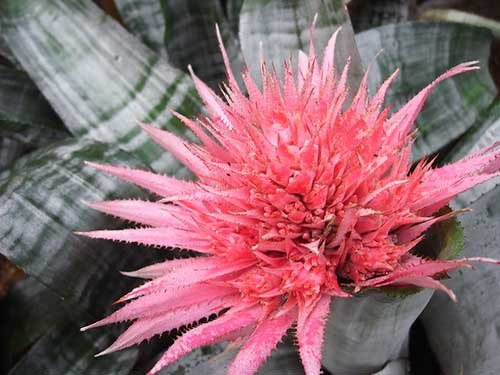

The enchanting bright pink striped echmea flower blooms slowly and pleases for 3 months. Incredibly beautiful leaves decorated with a silvery pattern. After flowering, as soon as the children grow up, they can be planted.
Bromelia loves warmth, but prefers to live away from the direct midday sun. Water this plant carefully, avoiding stagnation of water in the soil. But there should always be water in the outlet, in the funnel of leaves! In the hot season, the leaves need to be sprayed. Pineapple is also found among the “relatives”!
- How to grow an indoor Guzmania flower?
- How to provide ehmee care at home
Moisturizing is a must
An important step in caring for flowers in winter is to moisturize them.
Indoor plants also need normal air humidity: the rooms must be regularly ventilated, but so that the cold air does not get on the leaves and flowers.
In winter, the level of humidity in our apartments is 2-3 times lower than normal, so it is very difficult for plants to live in such conditions, and even from the condition of our skin it is perfectly visible: it is in winter that our skin dries and flakes more often.
You can buy a hygrometer so that you always know the level of humidity in the apartment, but it is best to have a humidifier: it will help both plants and people survive the winter.
Otherwise, if the air is very dry, you will have to use other means that require more trouble: install the plants in trays with moistened expanded clay, or spray them every day, except for plants with fluffy leaves - they are even cleaned of dust with soft brushes.
Ferns, orchids and other plants with delicate flowers and leaves suffer more from a lack of moisture.
To properly care for indoor flowers in winter, in addition to an electric humidifier, you can use a home fountain: it will not only humidify the air, but also decorate the room, and will also help people living in the apartment to always remain in a calm mood. However, it is not always possible to arrange a fountain - there must be enough space in the room for this.
It is rarely necessary to feed the plants in winter - once a month and half the dosage will be enough.

